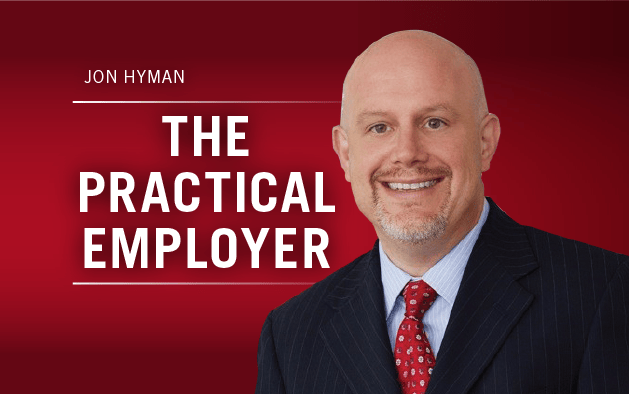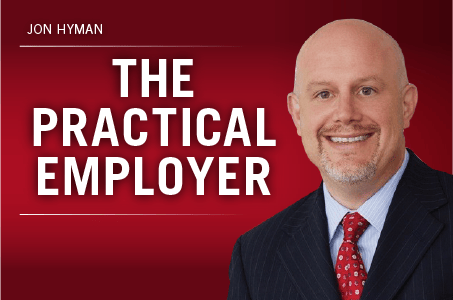Today’s recruiters face tough competition for good talent — and they worry about losing good candidates to long, drawn-out screening processes.
Recruiters are also facing increased pressure to fill more roles faster as 3 out of 4 companies plan to increase hiring. “With hiring on the rise, there is always a time challenge,” said Clare Hart, CEO of SterlingBackcheck, a background-checking provider. “The war for talent has enabled people with skills to change jobs more frequently, which is creating anxiety for recruiters tasked with filling those roles.”
At the same time, recruiters can’t afford to skip this vital step in the hiring process, especially with trends showing candidates are misrepresenting themselves more than ever. “I don’t want to be responsible for hiring someone with an unacceptable background,” said Kimberly Martin, senior human resources manager for Dentsply Sirona, a global dental supply company based in York, Pennsylvania. “People falsify their applications all the time.”
Mary O’Loughlin, vice president for global customer experience for HireRight, attributes this rise in part to the recession. “A lot of candidates were unemployed, and they are trying to expand previous jobs to cover those gaps,” she said.
Automate Everything
To meet the needs for faster, better and more seamless screening, employers are looking to their background-checking providers to streamline the screening process and make it as transparent and easy as possible for both the candidates and hiring managers. In response, vendors are revamping their technology and processes with a focus on improving the candidate experience from start to finish, and eliminating much of the manual entry and administrative tasks that bog recruiters down. “It’s all about addressing the pinpoints in the screening process,” O’Loughlin said.
These upgrades include integrating user platforms with clients’ applicant tracking systems in order to automate candidate data capture, offering tools that enable candidates to enter their own data from any device rather than requiring recruiters to do it, and providing text and email alerts to let the candidate and hiring manager know where they are in the screening process. Some vendors are also working with clients to develop candidate-facing tools including videos for their hiring sites to educate candidates about the screening process. “It helps set their expectations, which helps them build their brand as a great place to work,” she said.
To demonstrate the effect of these new tools, they are also offering more metrics to help customers understand how the screening process is functioning and to track key trends such as where red-flag candidates might be sourced from, said Christine Cunneen, CEO of Hire Image, a national background screening firm, and a member of the board of directors for the National Association of Professional Background Screeners. “Employers want more metrics about screening because it helps them to hire faster,” she said.
Contingents to Marijuana
Along with streamlining the screening process, employers are also turning to their screening vendors to help them manage a number of emerging trends in the broader recruiting world. One of the most notable trends is the tremendous uptick in use of contingent labor.
In 2015, the U.S. Labor Department found that 65 percent of employers anticipate an increase in the use of flexible staffing arrangements to meet their future talent needs, and consultancy Ardent Partners anticipates that 50 percent of the workforce will be contingent by 2020. Yet, less than half of organizations screen these workers, which exposes them to increased risks of negligence, fraud, theft and violence.
O’Loughlin said that interest in screening these workers is rising, though it can be more difficult to track down data about serial contracts, particularly because of how they record their work history. “They may say they worked at IBM, but really they were part of Beta Staffing Co. doing a project for IBM,” she said. “It’s a challenge to sort out.”
There is also the question of how to handle the data, and what you can screen for with contingent laborers, said Chris Dyer, founder and CEO of PeopleG2, a background checking company. “In most cases you can evaluate more data for contract workers because they have fewer protections,” he said. However, as contingent labor becomes a more dominant aspect of the workforce, that’s likely to change. Employers should pay attention to shifting regulatory trends. “If compliance rules for screening contract labor changes, it could impact the business,” he said.
Then there is the issue of drug screening, which Cunneen believes is an area of the background-checking process that is “ripe for change.” The big issue: marijuana. In many states marijuana use is legal in some or all cases, but it is still a federally banned substance, and unlike alcohol there are no tests to determine whether someone is using on the job because the drug stays in a person’s system for a long time. Employers are already asking how they should address marijuana testing if at all, she said, and she anticipates that there will be a lot of lawsuits as employers and regulators figure out how to handle this issue.
Lax Compliance Puts Employers at Risk
One area that employers are less worried about than they should be are general compliance rules. Less than one-fifth of employers say they are extremely concerned about compliance issues and related lawsuits despite the ongoing risk of lawsuits tied to mishandled screening processes.
In 2015 alone, BMW Manufacturing Co.; Chuck E. Cheese, also known as CEC Entertainment; Food Lion; Home Depot Inc.; and Whole Foods Market Inc. paid substantial Fair Credit Reporting Act class-action lawsuit settlements ranging from $716,400 to $3 million for conducting illegal background checks, failing to disclose background checks to applicants and breaking other FCRA rules.
Cities and states might also have a unique set of regulations governing what employers can screen for, how far back they can look, what constitutes a personal intrusion, and how exactly an employer needs to notify a candidate about the screening process. And when employers “screw up,” they face serious consequences, Cunneen said. “It is the employers’ responsibility to follow these rules, but they need to be able to rely on their background-screening provider to let them know what’s going on.”
This risk will only increase as more employers use these firms to screen employees in other countries where data can be less accessible, rules vary and information is harder to track down. Employers also need to be concerned about where screening data is stored when screening global candidates. “If a vendor’s data center is overseas, employers should be aware of their security protocols and their liability if that data is breached,” she said.
The issue of global compliance is becoming more important in light of the rapid growth of this $2 billion industry where several leading vendors have been acquiring competitors in order to quickly grow their global footprint. In the past two years alone, Accurate Background acquired fellow background checking company Hirease; HireRight acquired Powerchex, a pre-employment screening firm in the United Kingdom; and SterlingBackcheck acquired EmployeeScreenIQ then merged with cloud-based TalentWise earlier this year.
The industry has also seen HR tech firms from other areas of the workforce management software world moving into the background checking space through deals such as CareerBuilder’s acquisition of Aurico, a global provider of background screening and drug testing services. “Background screening is an essential part of recruitment and a natural extension of CareerBuilder’s product line,” CareerBuilder CEO Matt Ferguson said in a news release about the deal.
And this is just the beginning, said SterlingBackcheck’s Hart. “The industry is definitely consolidating, and we will continue to make future acquisitions as opportunities arise.”
Hart said that the consolidation trend is being driven by demands for better, faster and cheaper screening. “You gain advantages with scale,” she said, arguing that larger firms have the talent and resources to upgrade their platforms and provide a global service to meet the needs of international customers.
Vendors need to be thoughtful about their acquisitions and how they will continue to meet the needs of clients during the often tumultuous integration process, Dentsply Sirona’s Martin said. Martin previously worked with a background screening vendor who provided great service until it was acquired by another firm.
Suddenly the technology stopped working as well, links were broken or timed out, the screening process was delayed with no explanation, and in one case the vendor asked a candidate to travel 200 miles to do a drug screening.
“It was frustrating for the applicant, and it took up a lot of my time,” Martin said. It also caused a few good candidates to move on to the next job offer because the screening process took so long. “We hung in longer than we wanted to make sure the next vendor would be a good fit,” she said.
Martin now uses HireRight, which she said eliminated a lot of the technical glitches, automated much of the data entry, and in most cases completed the screening process in 10 days or less. “Background screening should feel seamless,” she said, adding that vendors need to stay on top of that customer experience or risk losing business. “If it’s not done well, customers will feel it,” she said, “and they have a lot of other options to choose from.”
Sarah Fister Gale is a writer based in the Chicago area. Comment below or email editors@workforce.com.






 Thankfully, courts have stepped in to fill in the ADA’s omission. For example,
Thankfully, courts have stepped in to fill in the ADA’s omission. For example, 